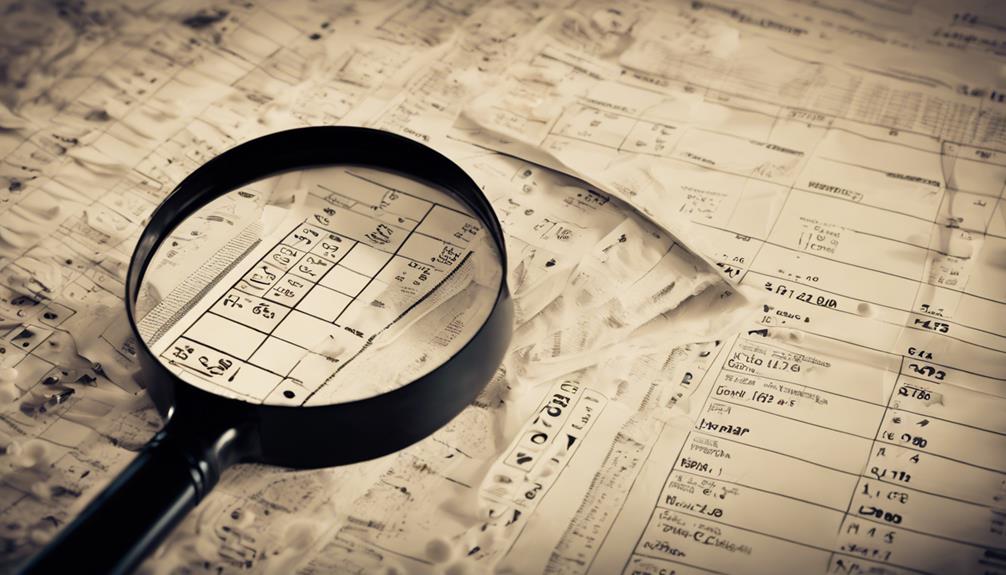- 7 Top Flite Golf Clubs XL for Improved Performance - September 28, 2024
- Top Flite Golf Clubs: Top 5 Reasons to Choose Them - September 28, 2024
- Top 3 Golf Club Fitters for a Perfect Swing - September 28, 2024
You'll start by gathering financial data and information, including income statements and balance sheets, to understand the golf course's financial health. Next, you'll select an appropriate valuation approach, such as the income, sales comparison, or cost approach, considering unique features like land use and equipment. Then, you'll calculate potential income and expenses, factoring in seasonal variations and capital expenditures. After that, you'll determine the highest and best use of the property, evaluating potential uses and market trends. Finally, you'll analyze and review the valuation results, scrutinizing estimates and considering challenges, and uncover the valuation insights that will help you make informed decisions.
Key Takeaways
- Collect financial data, including income statements, balance sheets, and cash flow statements, to understand the golf course's financial health.
- Select an appropriate valuation approach, such as income, sales comparison, or cost approach, considering unique features like land use and maintenance requirements.
- Calculate potential income and expenses, including revenue from various sources, seasonal variations, and capital expenditures for course improvements.
- Determine the highest and best use of the property, considering location, zoning, market demand, and environmental concerns.
- Analyze and review valuation results, evaluating estimated value, asset value, and tangible value, and being aware of challenges in the sales comparison approach.
Gather Financial Data and Info
To accurately assess a golf course's value, you must first collect and scrutinize key financial data and information, including income statements, balance sheets, and cash flow statements, which will serve as the foundation for your analysis. These financial documents will provide a detailed picture of the golf course's financial health, helping you pinpoint areas of strength and weakness.
Next, you'll want to gather information on the golf course's revenue streams, such as green fees, memberships, merchandise sales, and food and beverage services. This data will help you grasp the sources of income and their relative significance to the course's overall financial performance.
Select Appropriate Valuation Approach
You must choose the most suitable valuation approach for the golf course, taking into account its distinctive characteristics and the current market conditions. This decision is pivotal, as it will greatly impact the accuracy of your valuation.
You have three primary approaches to ponder: the income approach, sales comparison approach, and cost approach. The income approach focuses on the property's potential income and expenses to determine value, making it ideal for golf courses with stable cash flows.
The sales comparison approach, on the other hand, compares the golf course to similar properties that have been sold recently, providing valuable insights into market trends. The cost approach estimates the cost to replace the golf course and adjusts for depreciation, which can be useful for newly developed or distressed properties.
Take into account the unique features and challenges of valuing a golf course, such as its land use, equipment, and maintenance requirements, when selecting the appropriate valuation approach. By choosing the right approach, you'll be well on your way to determining a fair and accurate value for the golf course.
Calculate Potential Income and Expenses

By examining the golf course's revenue streams, encompassing green fees, memberships, and other sources, you can assess the potential income that drives the valuation process. This involves estimating the annual revenue from each source, taking into account factors like seasonal variations in demand.
Next, you'll need to approximate expenses, including maintenance costs, staffing, utilities, and marketing expenses. Don't overlook factoring in capital expenditures for course improvements and upgrades, as these can impact your bottom line.
To get an accurate picture, calculate your net operating income by deducting total expenses from total revenue. This will provide you with a clear understanding of the course's financial performance and aid you in making informed decisions about its valuation.
Be sure to take into account all revenue streams, including food and beverage sales, merchandise, and any other sources of income. By thoroughly analyzing these figures, you'll be able to ascertain the golf course's true value and make informed decisions about its future.
Determine Highest and Best Use
When evaluating a golf course's highest and best use, its location, zoning regulations, and market demand must be carefully assessed to determine the most profitable use of the property.
You'll need to evaluate other potential uses, such as residential development, commercial ventures, or recreational facilities, to identify the property's peak potential.
Analyze the economic feasibility and market trends to determine which use maximizes the property's value.
Don't forget to take into account any restrictions or limitations, such as environmental concerns or community preferences, that may impact the property's best use.
Analyze and Review Valuation Results

With the highest and best use determined, attention now turns to analyzing and reviewing valuation results to derive a thorough and accurate evaluation of the golf course's worth.
You'll need to scrutinize the Discounted Cash Flow (DCF) valuation results to determine the golf course's estimated value based on its projected cash flow.
Next, review the asset value calculation, considering the replacement costs and subtracting any outstanding debt to arrive at a tangible value.
The income approach results, often preferred by industry participants, should also be evaluated to determine the course's value based on its earning potential.
Be aware of the challenges posed by the sales comparison approach, such as data fragmentation in the golf course industry.
Frequently Asked Questions
How Do You Calculate Golf Course?
You calculate a golf course's value by conducting a course appraisal, which involves property valuation, revenue analysis, and a thorough assessment of its financial performance, market trends, and physical assets to determine its overall worth.
How Do You Determine Golf Course Rating?
You think golf course rating is as easy as sinking a hole-in-one, but it's not just about the greens; you'll need to ponder golf course maintenance, amenities, and location, too, before those trained pros can give it a rating that's par-fectly accurate.
How Many Steps Do You Take on a Golf Course?
You take around 10,000 steps on a golf course, influenced by factors like golf course design, etiquette, and maintenance, which impact the terrain, pace, and overall experience, ultimately affecting your physical activity and game performance.
How Do You Grade a Golf Course?
You rate a golf course by appraising its design, considering strategic elements and natural beauty, while evaluating maintenance standards, revenue generation, and overall playability, to provide an objective, analytical score.
Conclusion
You've now successfully valued a golf course in 5 simple steps. By following this process, you've guaranteed an accurate and dependable estimate of the course's worth.
Notably, according to the National Golf Foundation, the average 18-hole golf course in the US generates approximately $1.5 million in annual revenue. This underscores the substantial economic impact of these properties, emphasizing the importance of precise valuation methods.
Your analysis offers a thorough understanding of the course's financial performance, enabling well-informed decisions to be made.




